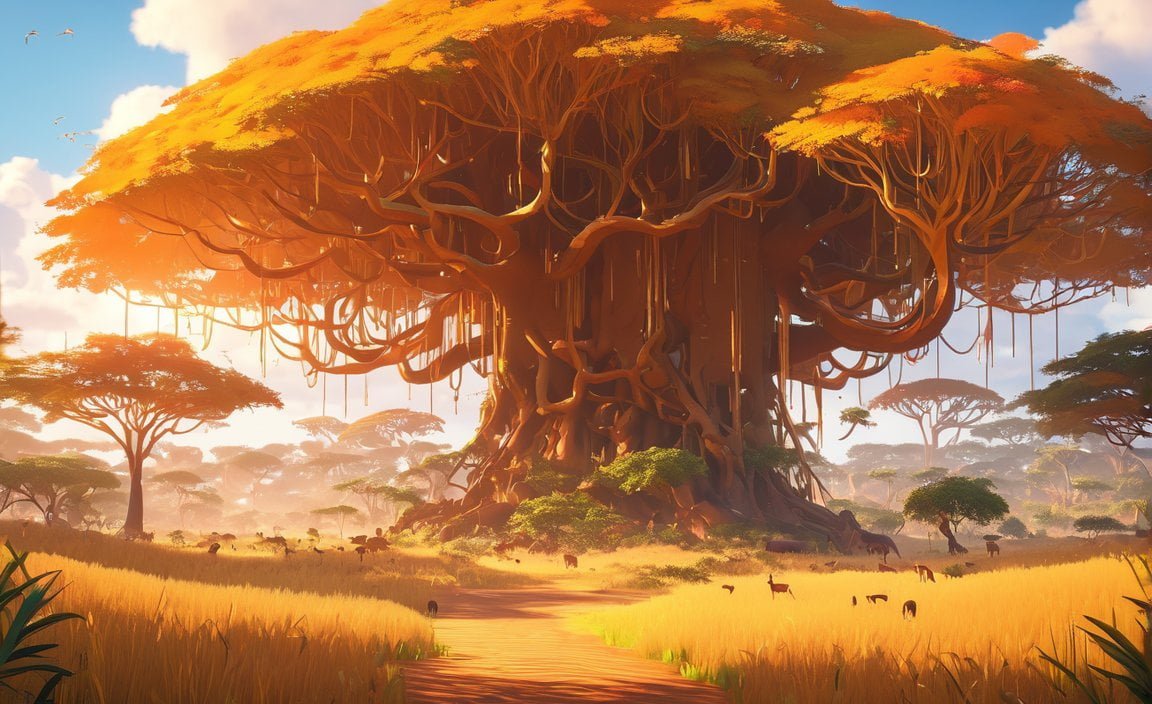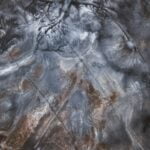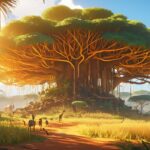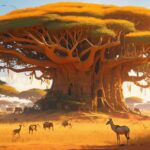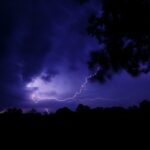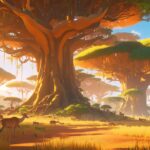Get ready for a wild ride through the savanna, a land where nature paints with bold strokes. Dive into 10 mind-blowing facts that’ll make you see the savanna like never before. From towering trees to epic predator vs. prey battles, the savanna is a living, breathing drama. We’ll pull back the curtain on its secrets, showing you how life thrives in this fascinating and ever-changing environment. Buckle up, nature lovers, because this journey through the savanna is sure to leave you in awe.
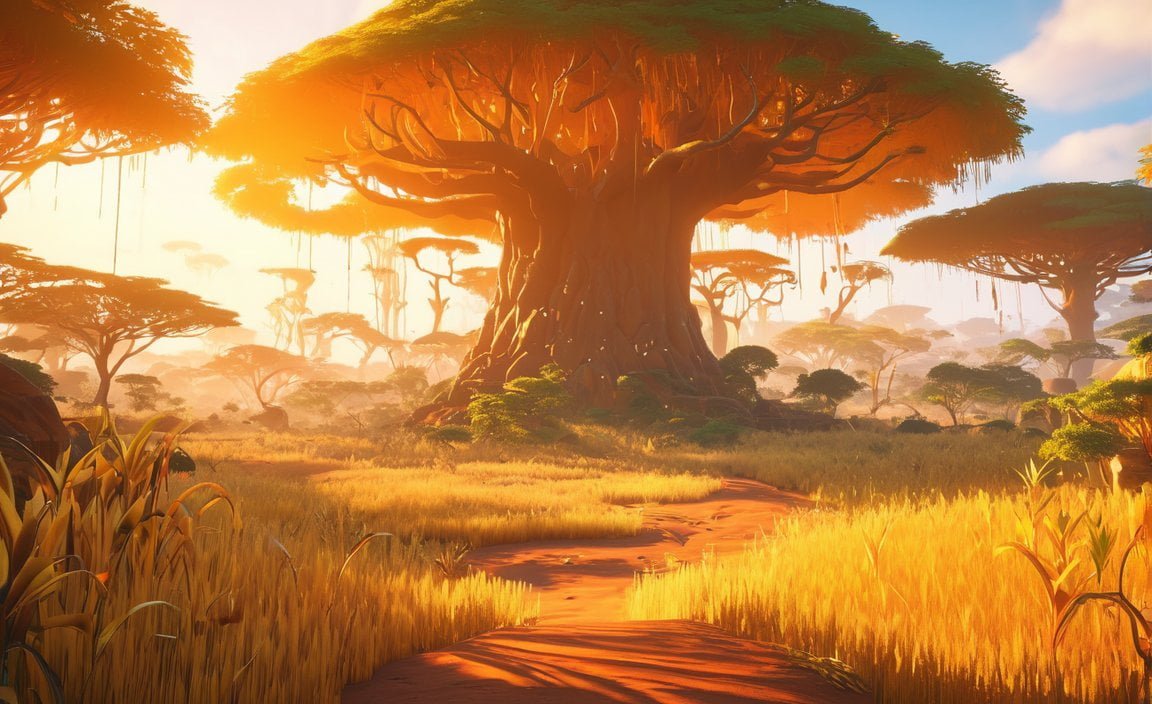
10 Intriguing Facts About the Amazing Savanna Biome
Hey there, curious explorers! Let’s embark on a magnificent journey into the heart of the savanna, a breathtaking realm where nature’s wonders unfold.
1. A Global Tapestry
Imagine a sprawling mosaic that spans across the globe, from the vast grasslands of Africa to the sun-kissed shores of South America, India, and Australia. The savanna weaves a diverse tapestry of landscapes, each with its own enchanting story to tell.
2. Africa’s Savanna Kingdom
Africa holds the title as the undisputed master of the savanna realm. Its vast expanse stretches far and wide, creating a breathtaking spectacle of interconnected habitats that are home to an astonishing array of creatures.
3. Herbivore Paradise
Prepare to be amazed by the wide-eyed zebras and graceful giraffes that roam the savannas. These herbivores, each with their unique traits, graze and browse, playing a crucial role in maintaining the delicate balance of this ecosystem.
4. Rhythms of the Seasons
The savanna’s heartbeat follows a distinct rhythm, marked by the changing seasons. The wet season transforms the landscape into a lush oasis, while the dry season unveils a more austere beauty, shaping the lives of its inhabitants.
5. Tree-Grassland Harmony
Unlike other biomes, the savanna is a harmonious fusion of trees and grasslands. This unique partnership creates a patchwork of habitats, providing shelter and sanctuary to an extraordinary range of species.
6. Fire, the Savanna’s Rejuvenator
Fire, both natural and human-induced, is an integral part of savanna life. Its fiery embrace clears old growth, making way for new horizons of vegetation. This cyclical dance ensures the long-term health and vitality of this dynamic ecosystem.
7. Elephant Gardeners
Meet the gentle giants of the savanna—elephants! Unbeknownst to them, their feeding habits play a vital role in shaping the landscape. By clearing vegetation, they create clearings that invite sunlight to kiss the forest floor, fostering the growth of diverse plant life.
8. Hidden Oases
Nestled within the savanna’s vast expanse are pockets of lush greenery known as “dambos.” These wetlands serve as sanctuaries during the dry season, providing life-giving refuge for wildlife amidst the surrounding aridity.
9. Symphony of Birdlife
The savanna is a paradise for feathered friends, with over 450 recorded bird species. From majestic eagles soaring high above to the inquisitive guinea fowl bustling at ground level, the chorus of their melodious songs enriches the symphony of life.
10. Cradle of Civilization
The savanna has played a profound role in the story of humankind. It was here that early hominids thrived, leaving behind traces of ancient civilizations. Archaeological treasures unearthed in these grasslands continue to shed light on our origins and the journey we’ve made.
Do you know the 10 interesting facts about the temperate deciduous forest biome? Click here to explore them!
Did you know that the African savanna biome holds many fascinating secrets? Discover the 10 most interesting facts about it by clicking here!
Uncover 10 captivating facts about the savanna that will leave you amazed! Click here to find out more.
Are you curious about the temperate deciduous forest? Click here to learn 10 intriguing facts about this unique biome.
Embark on an exciting journey to uncover the 10 most interesting facts about the tropical savanna biome. Click here to start exploring!
Dive into the underwater world and discover 10 fascinating facts about underwater animals. Click here for an adventurous experience.
What Unique Canopy Structure Characterizes Savannas?
Picture this: a vast, sunlit landscape adorned with isolated trees standing tall like guardians, casting dappled shadows on the vibrant grass below. This is the mesmerizing canopy of a savanna, a biome unlike any other.
Unlike lush forests where trees form a dense, interlocking embrace, savannas boast an open canopy. Trees are generously spaced, their branches reaching skyward without hindrance. This unique structure is a symphony of nature’s design, with sunlight filtering through the canopy like golden threads, nurturing the vibrant tapestry of life beneath.
The open canopy plays a crucial role in the savanna’s ecology. Sunlight, the lifeblood of photosynthesis, can penetrate the canopy to the forest floor, fostering a diverse array of plant life. Grasses, shrubs, and wildflowers carpet the ground, forming a vibrant understory that feeds and shelters a wide range of creatures.
Equally important, the open canopy allows animals to roam freely. Grazing herbivores, such as zebras and wildebeest, have ample space to roam in search of food. Predators like lions and leopards can easily navigate the terrain, using trees as strategic vantage points for hunting.
This harmonious balance of flora and fauna makes the savanna an ideal habitat for a myriad of species. From majestic elephants to elusive leopards, the diverse inhabitants of the savanna thrive amidst the open canopy and abundant sunlight.
Table: Key Features of the Savanna Canopy Structure
| Feature | Description |
|---|---|
| Tree Distribution | Scattered and isolated trees |
| Canopy Density | Open and spacious |
| Sunlight Penetration | Direct sunlight reaches the ground |
| Impact on Plant Growth | Promotes a diverse understory |
| Impact on Animal Movement | Facilitates movement and hunting |
What factors drive the contrasting wet and dry seasons in savannas?
If you’ve ever visited a savanna, you’ll know that these grasslands experience two very distinct seasons: wet and dry. The wet season transforms the savanna into a lush, vibrant paradise, while the dry season turns it into a parched, desolate landscape. What causes this dramatic seasonal change?
The role of the sun and rain
The key factor driving the wet and dry seasons is the sun’s position in the sky. During the wet season, the sun is positioned directly overhead, causing heavy rainfall. This rainfall transforms the savanna into a lush, green paradise, teeming with plant and animal life.
As the sun gradually moves south, the rainfall decreases, and the savanna begins to dry out. By the time the dry season hits, the rainfall has stopped almost entirely, and the savanna becomes a parched, barren landscape.
Wildlife adaptations
The contrasting wet and dry seasons have a profound impact on the wildlife that lives in savannas. During the wet season, food and water are abundant, allowing animals to thrive and reproduce. As the dry season approaches, however, animals must adapt to the changing conditions. Some animals, like elephants and zebras, migrate in search of food and water. Others, like lions and hyenas, stay put and rely on their prey to survive.
The importance of savannas
Savannas are important ecosystems that play a vital role in global climate regulation. They store carbon and release water vapor into the atmosphere, which helps to regulate the Earth’s temperature. Savannas also provide habitat for a wide variety of animals, including many endangered species.
Conclusion
The contrasting wet and dry seasons of savannas are driven by the sun’s position in the sky. These seasons have a profound impact on the wildlife that lives in savannas and play a vital role in global climate regulation.
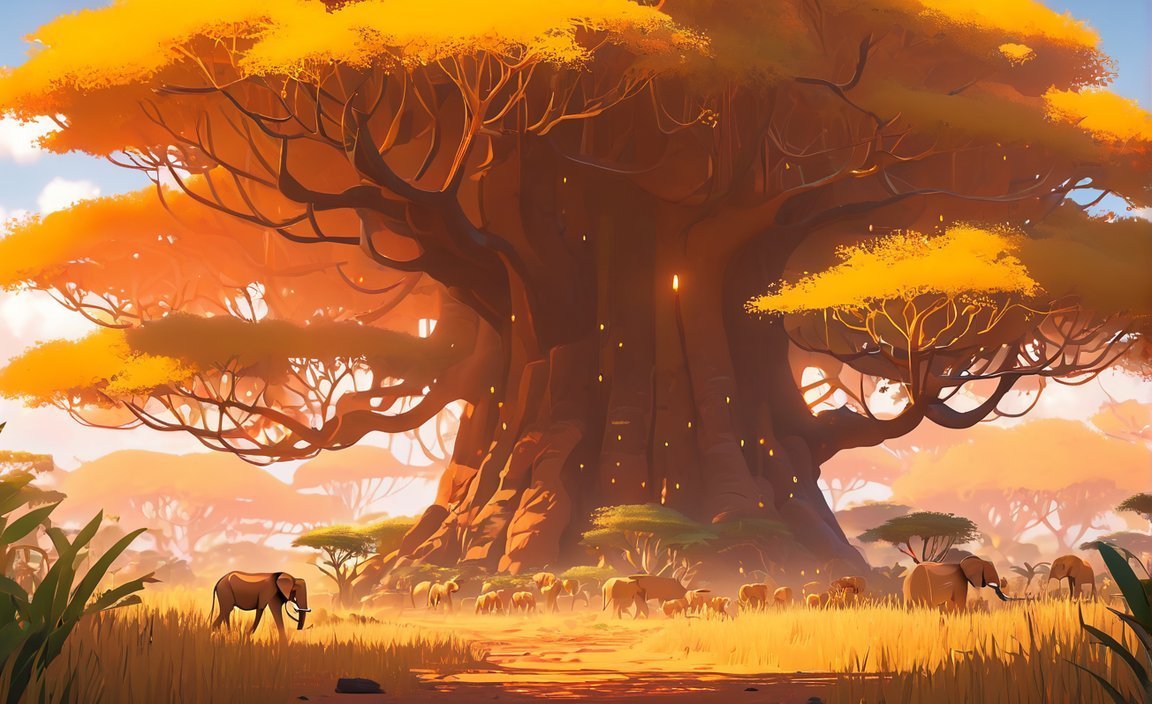
How does the diverse herbivore population contribute to the savanna ecosystem?
Just like how different gears work together to make a car run smoothly, herbivores are the gears that keep the savanna ecosystem chugging along. They’re like the grass-eaters that shape the landscape and keep everything in balance.
Grazing and Browsing: The Savanna Haircut
Herbivores have a special knack for trimming the savanna. They nibble on grasses, munch on leaves, and gnaw on bark, giving the savanna its distinctive look. This constant grazing and browsing keeps trees and shrubs in check, making sure they don’t grow too tall and block out the sun for the grasses below.
The Balance Act
Just like in a good dance, the different herbivores in the savanna each have their own role to play. Some, like elephants, are like the heavy dancers who stomp all over the place, clearing the way for smaller herbivores like zebras and impalas to graze on the short grass. This diversity helps maintain a harmonious balance in the savanna, preventing any one species from becoming too dominant.
Nature’s Gardeners
Herbivores are also like the gardeners of the savanna. When they eat, they disperse seeds, helping plants grow and spread. They also aerate the soil by digging and trampling, which lets water and nutrients reach the plant roots more easily. It’s like nature’s way of giving the savanna a fresh start.
When the Gears Stop Turning
Imagine a car without gears. It would be a mess! Similarly, if herbivores were removed from the savanna, the ecosystem would fall apart. Trees would grow too tall, blocking out the sun for grasses. And without grasses, there would be less food for the herbivores that rely on them. It’s a delicate balance that relies on the herbivore population working together.
Citation: Dublin, H. T., Sinclair, A. R. E., & McGlade, J. (1990). Elephants and savanna woodland ecosystems: An overview. In: Anderson, G. K., & Owens, M. (Eds.). Elephants and their Habitats: Proceedings of the Symposium on the Status and Conservation of African Elephants and Rhinos. IUCN, Gland, Switzerland.
FAQ
Q1: How widespread are savannas globally?
A1: Savannas can be found in various regions of the world, including Africa, South America, Australia, and India. Africa is home to the most extensive and well-known savannas.
Q2: What is the defining characteristic of the savanna’s canopy structure?
A2: Savannas have an open canopy structure. The trees are widely spaced, allowing sunlight to reach the ground and support a diverse array of grasses and other vegetation.
Q3: Why are savannas described as “transitional biomes”?
A3: Savannas are often considered transitional biomes because they exhibit characteristics of both tropical rainforests and deserts, creating a unique blend of species and ecological traits.
Q4: What factors shape the behavior and distribution of wildlife in savannas?
A4: The distinct wet and dry seasons in savannas influence the behavior and distribution of wildlife. During the wet season, water is abundant, and herbivores can disperse more widely. In contrast, during the dry season, animals often concentrate around water sources.
Q5: How do herbivores contribute to the dynamics of savanna ecosystems?
A5: Herbivores in savannas play a crucial role in shaping the ecosystem’s dynamics. Their grazing and browsing activities influence woody cover and grass abundance, creating a complex interplay between vegetation, herbivores, and fires that maintains the savanna’s unique characteristics.
- Discover the Borough of Frenchtown, NJ: A Delaware River Town Blending History, Art & Nature - November 22, 2024
- Discover Clarks Grove, MN: A Small Town with a Big Heart - November 22, 2024
- Califon Borough, NJ: A Small Town with a Big Heart (and Rich History) - November 22, 2024
